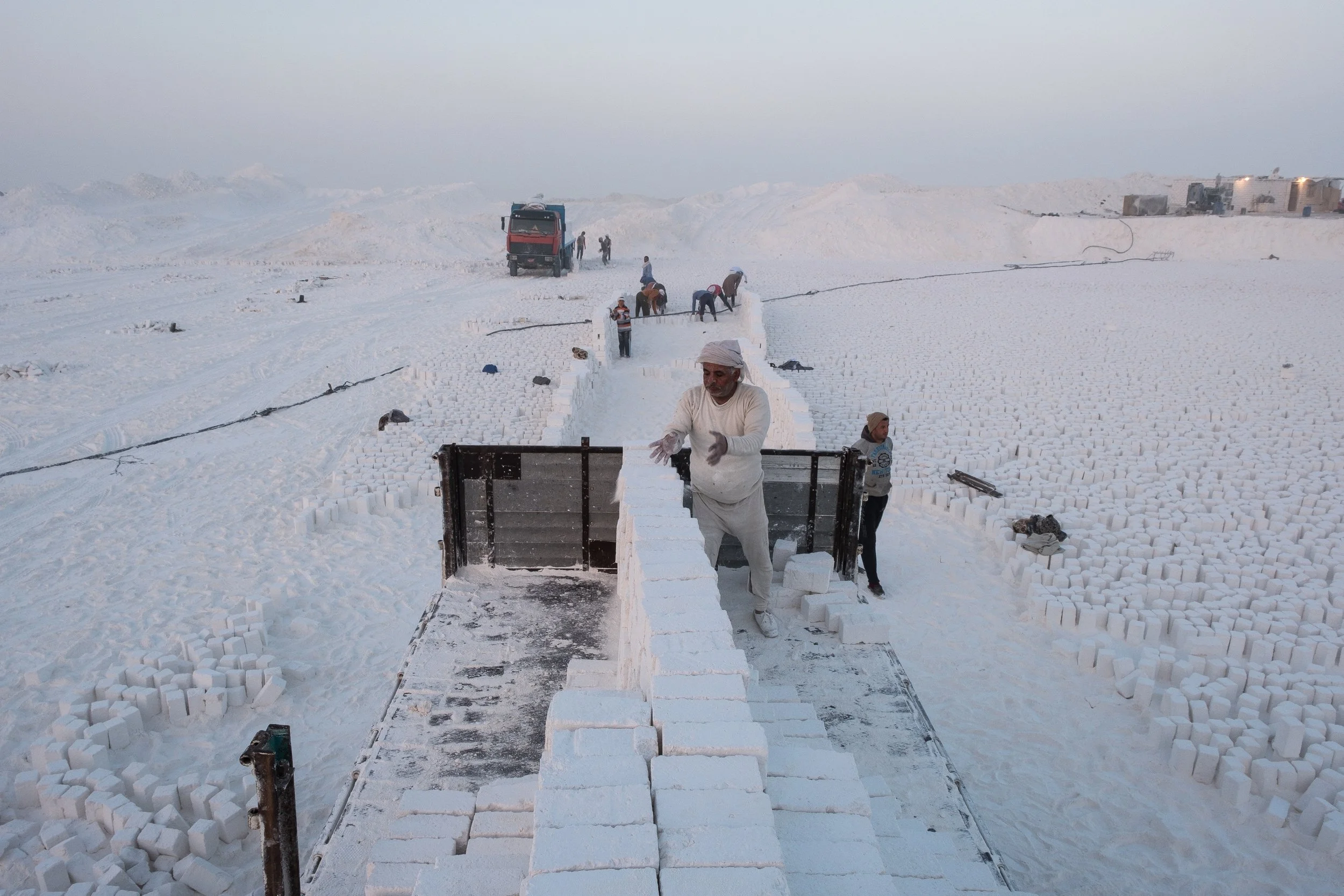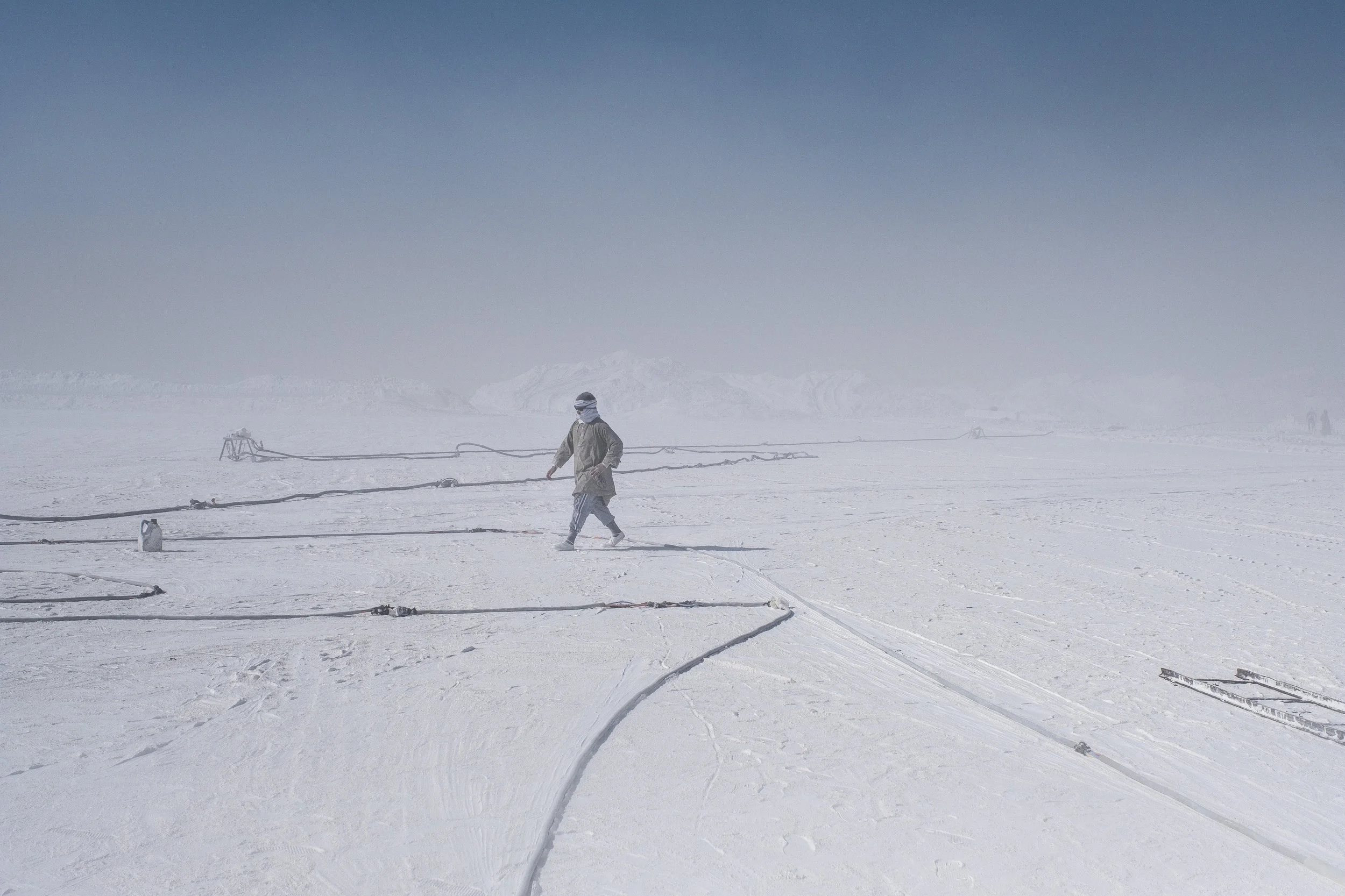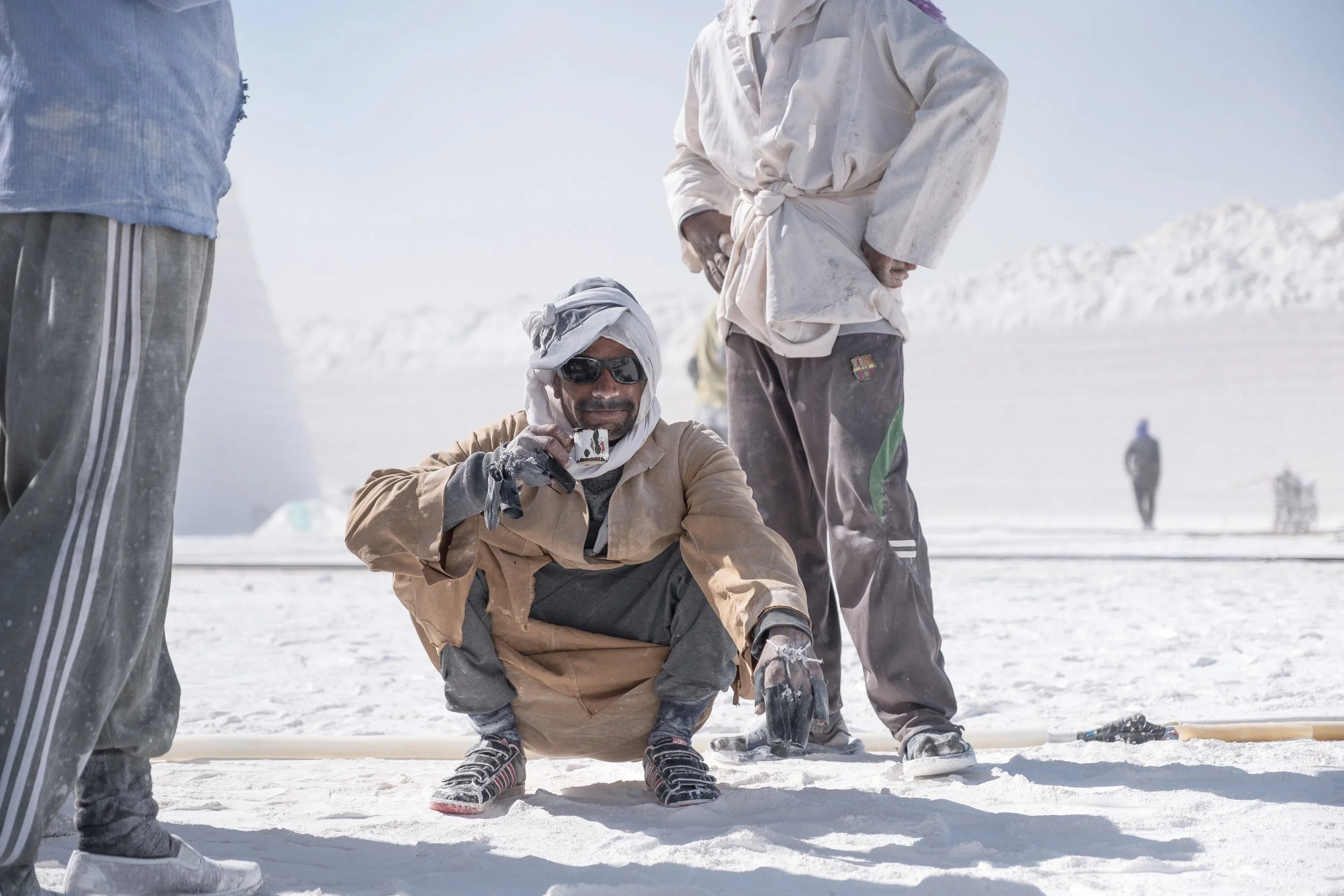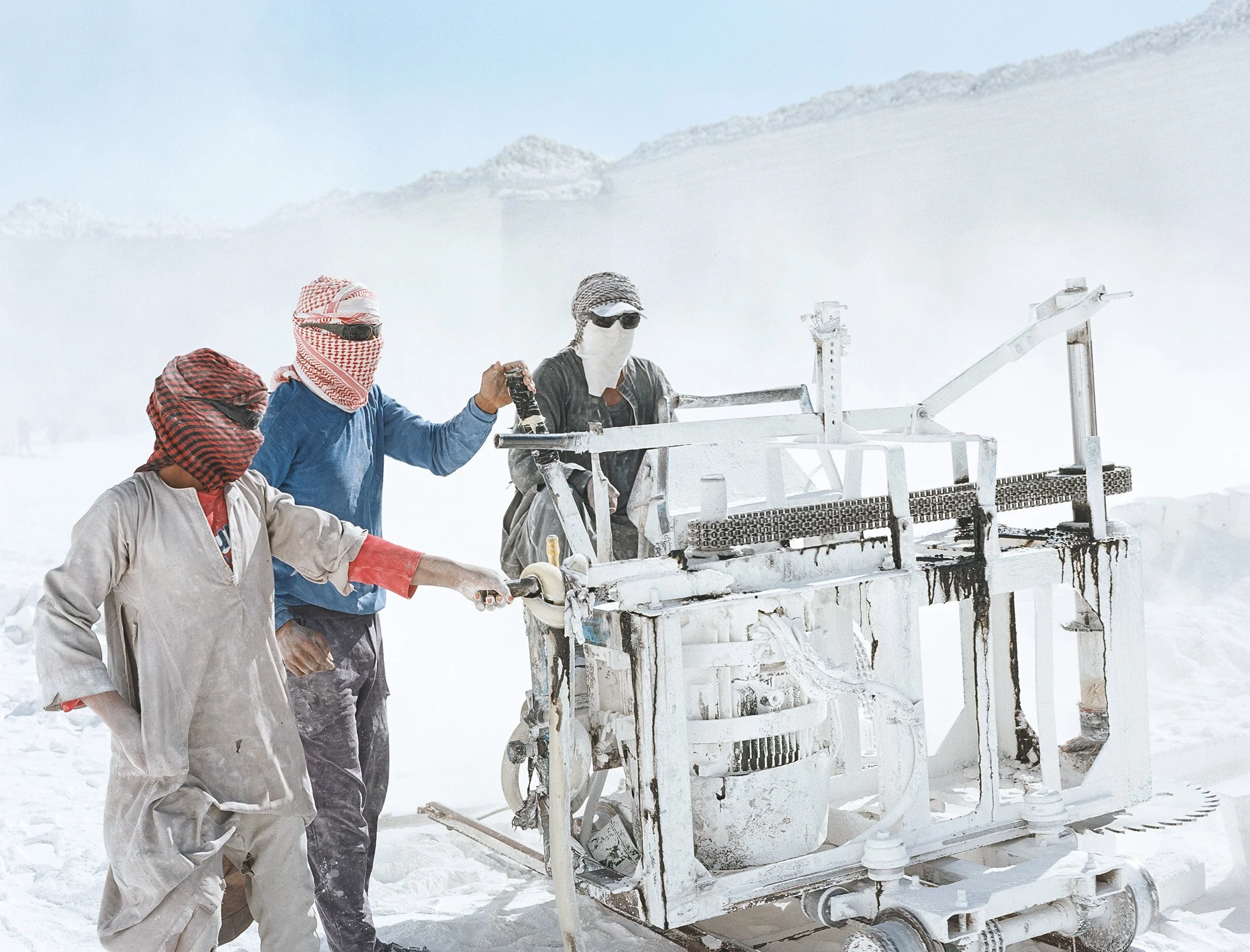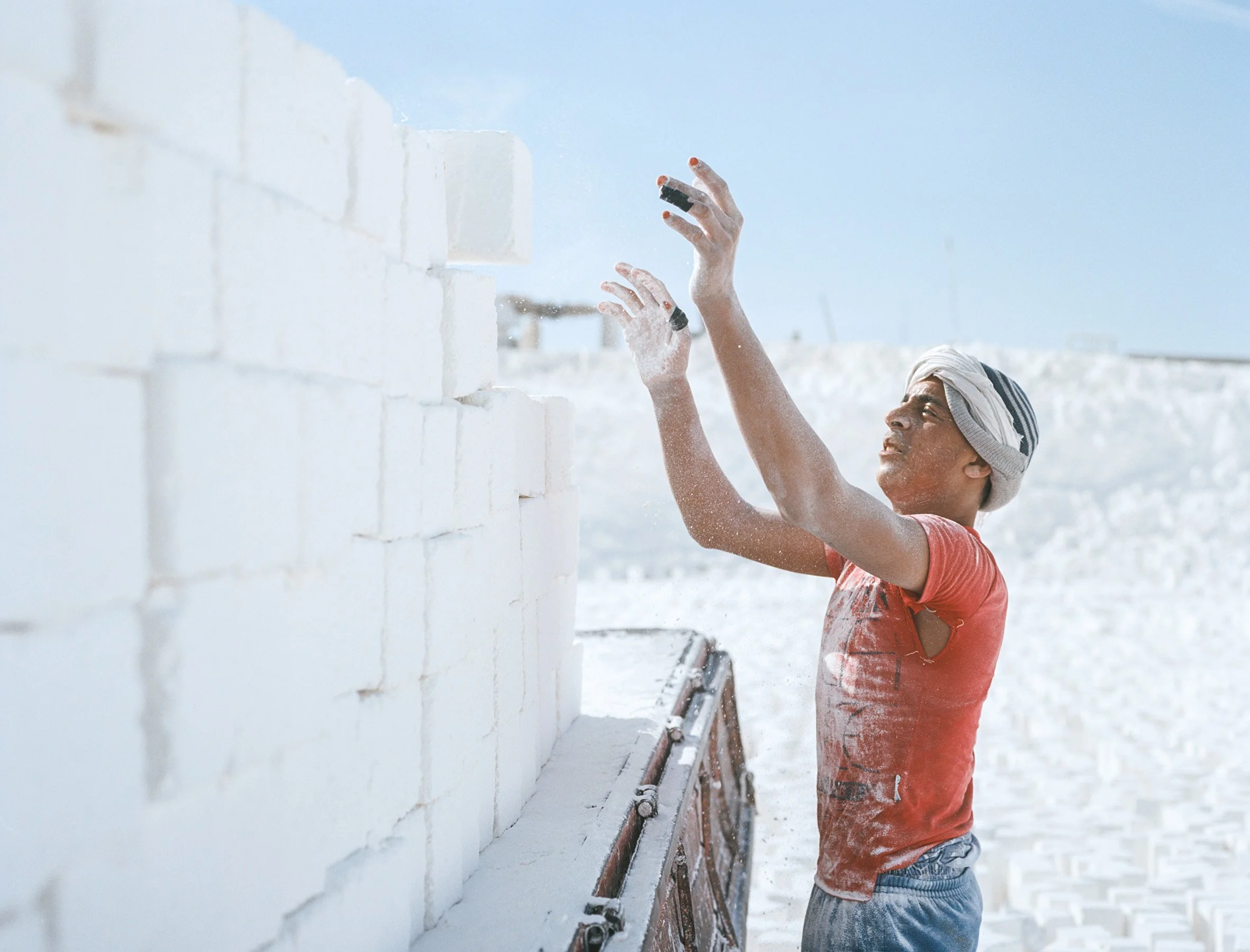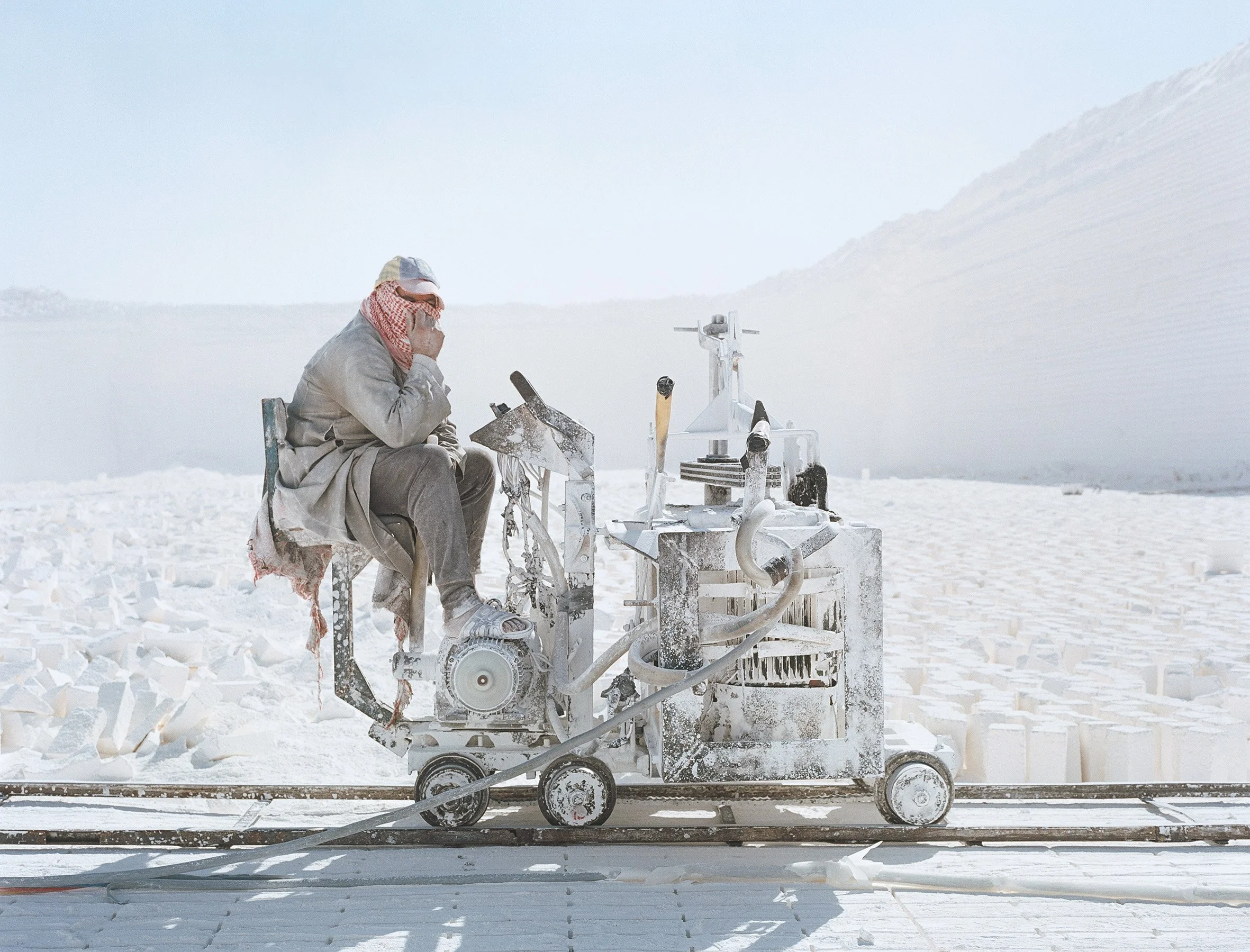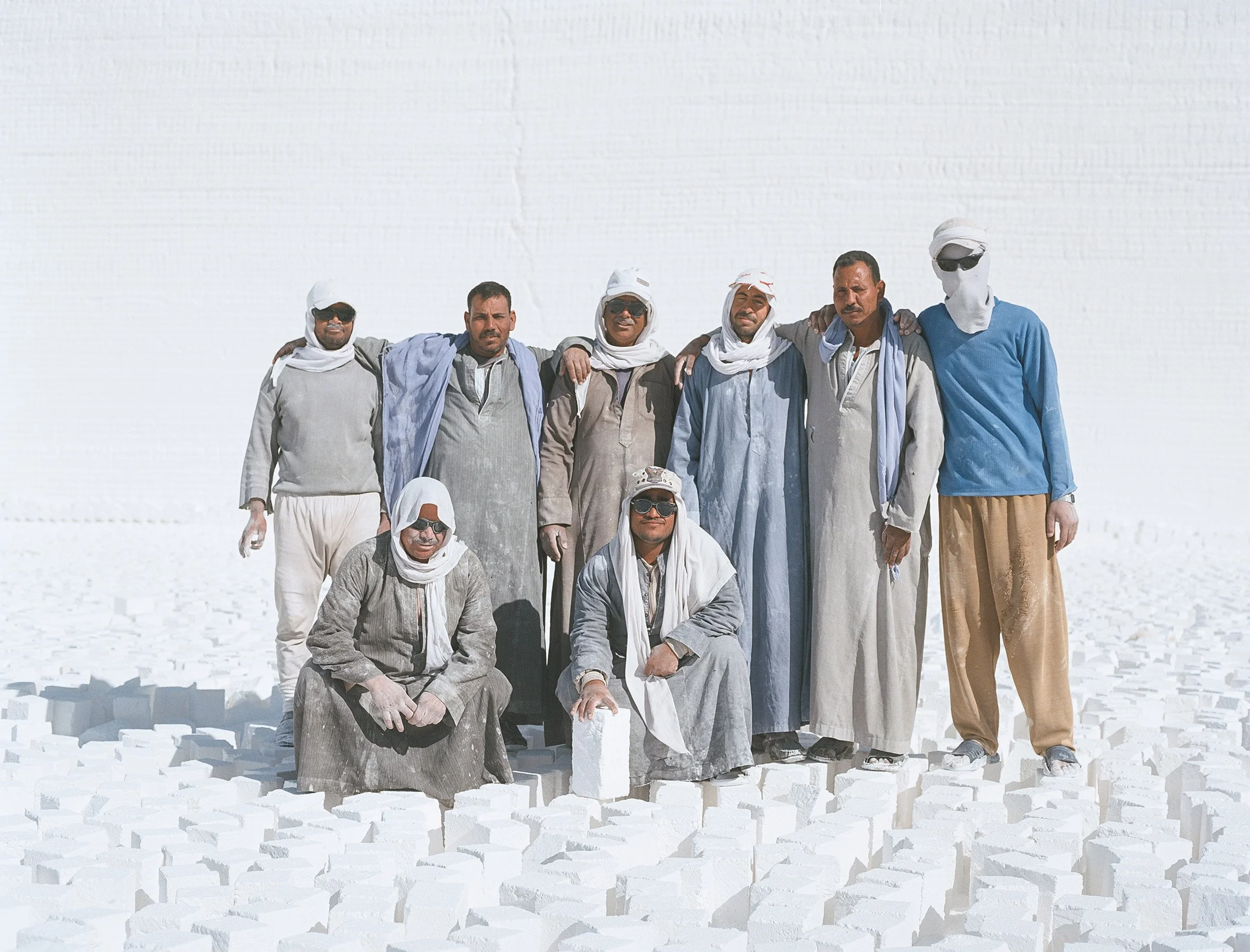


L’ENFER BLANC, EGYPTE . 2017
4h30 du matin. Des minibus déversent des hommes en djellaba par dizaines. Ils s’interpellent, gesticulent et tuent le temps en dévorant des falafels et en sirotant du thé. En moins d’une heure, le carrefour est noir de monde. Tous attendent la même chose: l’arrivée des pick-ups qui les amèneront sur les carrières de calcaire. A Al-Minya, c’est la source principale de travail. Presque tous les hommes en âge de travailler dans la région s’y rendent 6 jours sur 7. La route est chaotique et labyrinthique. Et le jour n’étant pas encore levé, il fait très froid. Certains se protègent du vent sous des bâches, d’autres s’emmaillotent dans des couvertures. Les hommes s’entassent à l’arrière des véhicules et se serrent les uns contre les autres pour 30 à 45 minutes de route.
L’arrivée sur les carrières est surréaliste. Une lumière violacée teinte le ciel et les paysages blancs immaculés qui nous entourent. Des étincelles éclaboussent la nuit. Aux premières lueurs du jour, les hommes affutent les scies circulaires. C’est l’amorce d’un ballet bien rodé où chacun à sa place et sait ce qu’il a à faire. Mettre en place les rails et les décaler au fur et à mesure des découpes, manoeuvrer les machines, écarter les briques désolidarisées du sol et recommencer à nouveau. L’air est irrespirable et la lumière aveuglante. Des nuages de particules enveloppent les silhouettes fantomatiques. A chaque inspiration, le silice s’engouffre dans les poumons des ouvriers. Pour limiter les ravages et à défaut de masque de protection, ils tentent de se protéger avec des foulards et des cagoules en tissu. Mais, cela n’arrête pas la maladie: embolie pulmonaire et cataracte, entre autres, sont monnaies courantes.
Les hommes le savent. Les risques pour la santé et les accidents sont nombreux sur les carrières. Il suffit d’une scie qui dérape ou d’un éclat de lame qui se détache pour lacérer la chair et causer des dommages irréparables. Les fils électriques à nu serpentant sur le sol sont à l’origine de nombreuses électrocutions. Et pour couronner le tout, la plupart de ces ouvriers ne sont pas assurés. Les propriétaires des carrières n’arrivent pas à obtenir les licences qui permettrait de garantir à leurs employés une retraite et une assurance maladie. L’armée ne délivre qu’au compte-goutte les fameux sésames. Il faut se plier à des règles très strictes et payer des taxes exorbitantes, souvent bien plus élevées que le bénéfice réel de ces entreprises. Pour 5 ou 6 euros par jour et malgré les risques, les hommes de la région continuent donc à produire du calcaire et à s’exposer au pire.

